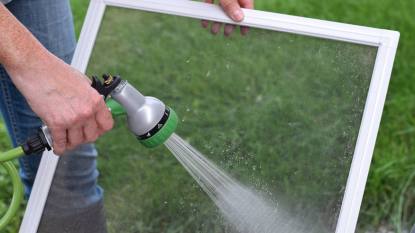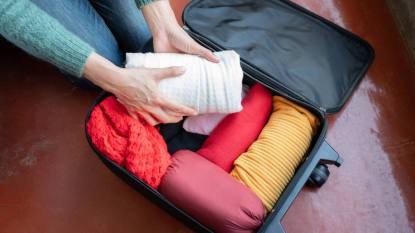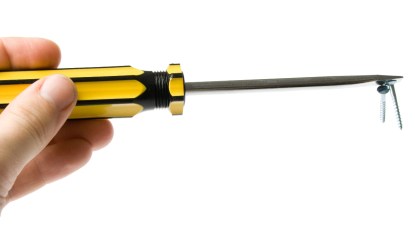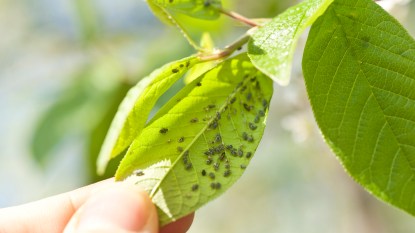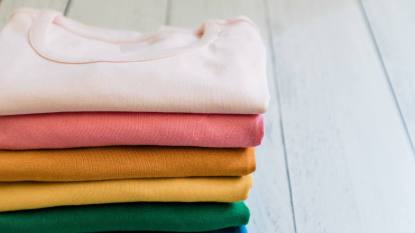How To Get Rid of Mice — Pest Pros Reveal The Best Cheap, Easy Home Remedies
Plus, genius ways to make your house inhospitable to them so they never come back!
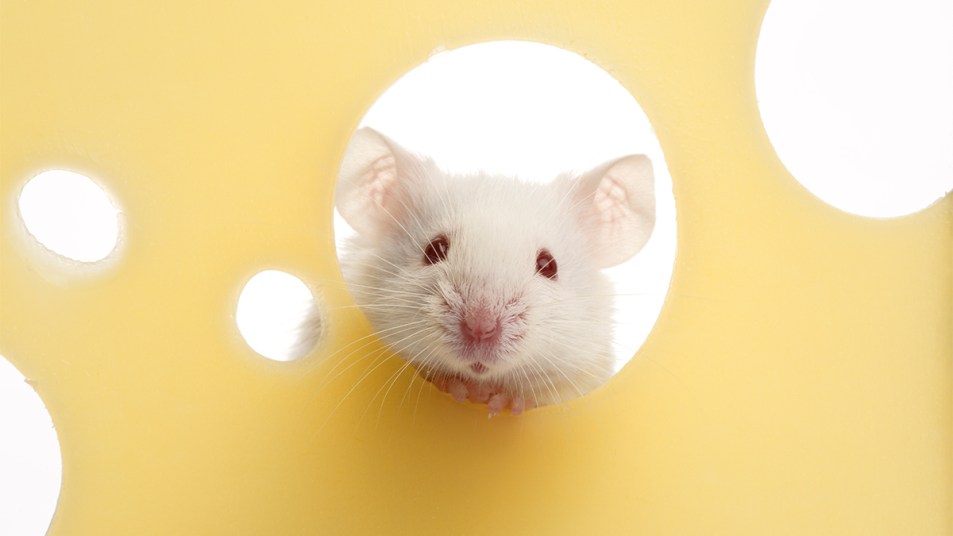
Ahh, we love the nip in the air that means fall is finally here. Unfortunately, the dip in outdoor temperatures means mice will be looking to take up residence in warmer surroundings, namely your home. If all through your house a creature is stirring, don’t worry — it’s easier than you think to banish mice. And it’s important to know: Not only are mice a nuisance, they can also import other pests, like ticks and mites, into your home. In fact, according to Discovery Wildlife, 42% of homeowners with an unwanted “mouse guest” will experience damage to their home’s structure and furnishings; 31% to food supplies; and 9% to insulation and wiring. And since a single mouse can give birth to 50 or more babies a year! We’ve tapped pest pros to tell us how to get rid of mice without having to call…a pest pro!
How to tell if you have mice
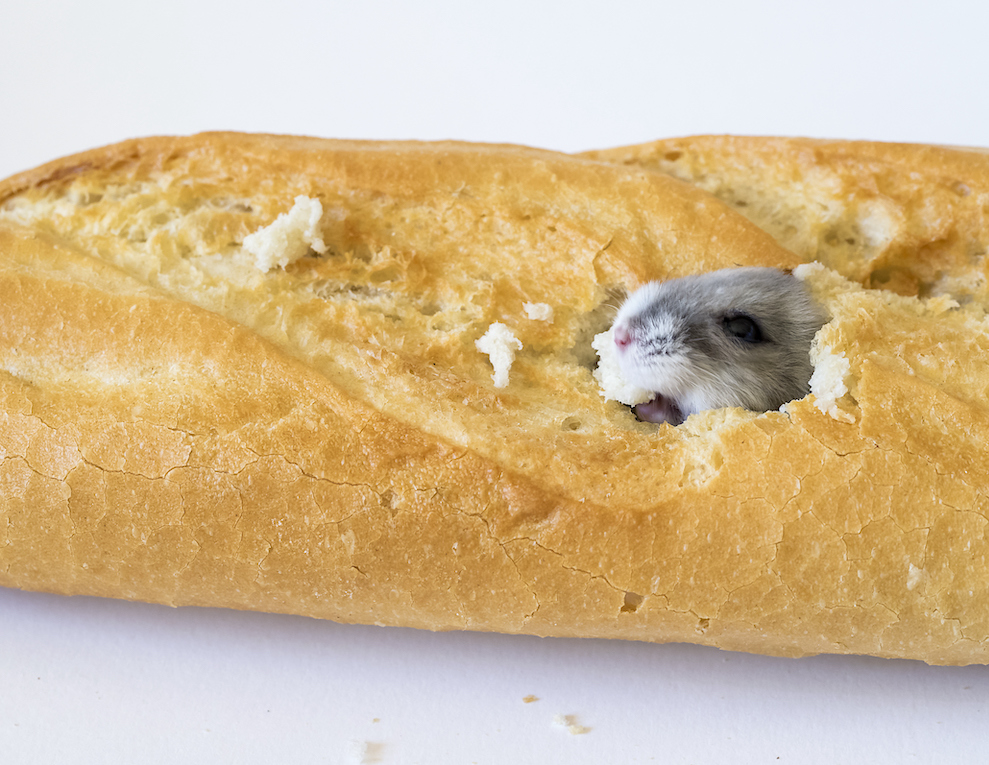
“Mice are primarily nocturnal, so the chances you’ll actually see one are low unless you’re a night owl,” explains Nicole Carpenter, pest control specialist with Black Pest. Signs you have one or more living among you include:
- Holes chewed into boxes of food, pet food and litter
- Holes chewed into furniture, blankets or pillows with stuffing disturbed
- Cylindrical, pointy-ended droppings about 6 mm long
- The smell of ammonia, which is caused by their urine
- Hearing scurrying, squeaking or gnawing sounds in your walls, vents or ceiling
- Seeing tooth marks in furniture, walls or wires
- Dirty-looking smears along walls or floors, which is caused by the grease on their fur
Why mice can be hazardous to your health
Mice can carry several diseases that can be transferred to their human roommates, including hantavirus, leptospirosis, lymphocytic choriomeningitis, typhus and even the bubonic plague, according to the Centers for Disease Control. And though it’s rare to get sick from the rodents, it’s important to throw away any food they may have gotten into to ensure you stay disease-free.
How to get rid of mice: the best no-trap deterrent home remedies
If you’ve found signs that little critters have set up shop in your home, try the following simple home remedies to create a mouse-free zone without needing to trap and kill them:
1. The smell of peppermint
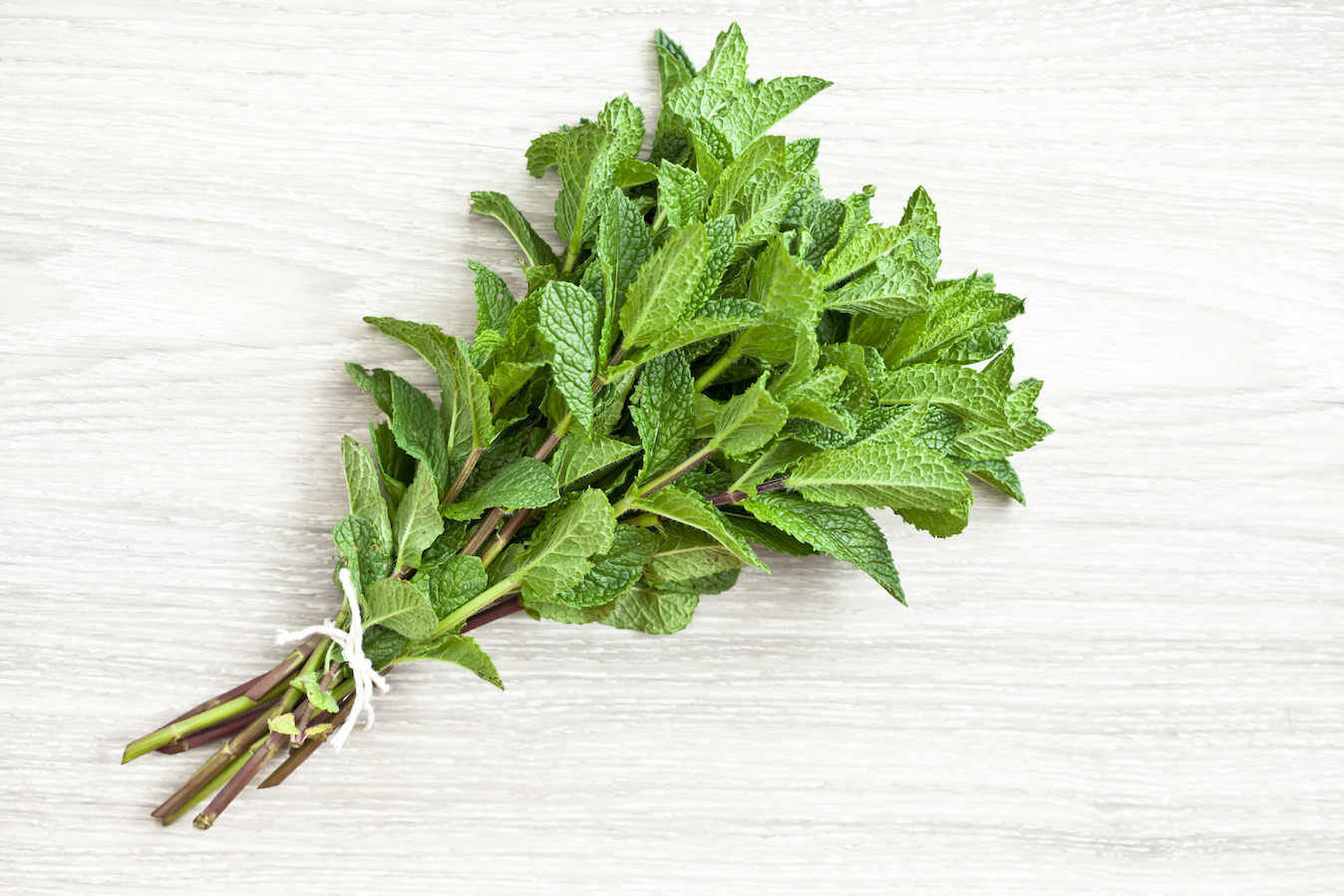
Mint is one of the best all-natural mice deterrents there is. “Mice really hate the smell and will go out of their way — even leave their cozy nests behind —to avoid it,” Carpenter reveals. “Just take some cotton balls, soak them in peppermint essential oil and leave them near spots you think the mice are active in your home.”
2. The smell of mothballs
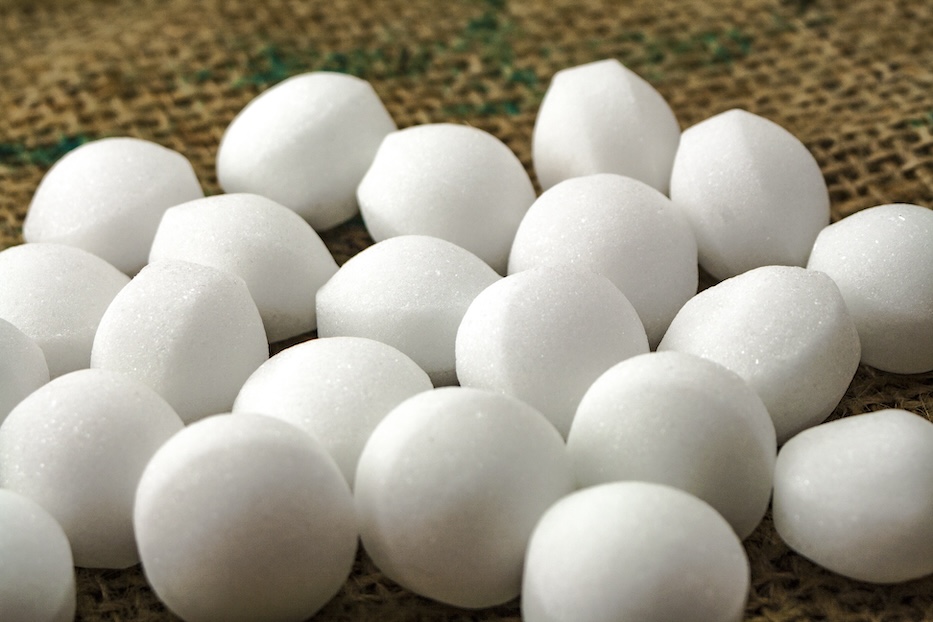
May as well call them miceballs, mothballs contain naphthalene and paradichlorobenzene — as these chemicals break down, they produce an odorous gas that creates that signature “mothball” scent. Mice not only find the smell unpleasant, the gas is also unhealthy for them, so they’ll take off for clearer air elsewhere. “Simply place mothballs near where you think the mice are nesting,” says Thomas.
3. The smell of white vinegar
Another scent mice won’t want to be around is white vinegar. Carpenter says there are two ways to put it to work: “First, you can soak cotton balls in white vinegar and put them where you suspect mice might be. Change these every few days to keep the vinegar smell strong. Or you can mix equal parts white vinegar and water in a spray bottle and spritz it along baseboards, corners and entry points. Repeat this as needed.”
How to get rid of mice: humane trap home remedies
Humane traps let you capture mice, then release them unharmed away from your home. Experts recommend driving at least two miles away, otherwise the mice will often try to return. A few to try: Wanqueen Humane Trap 4-pack, (Buy from Amazon, $12.99) or Harris Catch and Release Humane Mouse Trap 2-pack, (Buy from Home Depot, $14.39).
If you are considering using traps that kill mice, the best choice is a spring trap, which can be found at your local supermarket or dollar store and are the least likely to cause the mouse any suffering.
Most pest experts recommend staying away from glue traps due to cruelty, and from poisons, as these not only cause an unpleasant death for the mouse, but they can wind up perishing inside your walls or vents and be difficult to remove. Plus, if the bait or poisoned mouse is eaten by pets or other wildlife, they can wind up being poisoned, as well.
Can a cat help rid my home of mice?
Not all cats are interested in hunting, and even those who do like to stalk prey typically cannot tackle a true infestation. Bottom line: Kitties are great pets, but generally not a reliable form of mouse control.
How to keep mice from ever darkening your door
To avoid even needing to know how to get rid of mice using home remedies, the first line of defense is to keep mice out of your home in the first place, says Sean Thomas, owner of DIY pest control blog Conquer Critters. His easy how-tos:
1. Tweak your pantry
Food is one of the top reasons mice enter homes, according to Thomas, and they can detect scents up to 10 miles away — which means they can sniff out crumbs left on your counters and floors, as well as food left in paper or cardboard containers, which includes pantry staples like rice, cereal, oats, sugar and pasta. Give your kitchen a quick daily sweep to stay on top of crumbs, Thomas advises. “And store food in airtight, mouse-proof packaging.” Look for hard plastic food storage bins at the dollar store. Or you can buy entire sets, like the Mibote 28-piece airtight storage container set (Buy at Walmart, $49.99). Not only are they mouse-proof, they also keep your food fresher longer and can transform your pantry from cluttered to a beautifully curated space.
2. Plug sneaky leaks
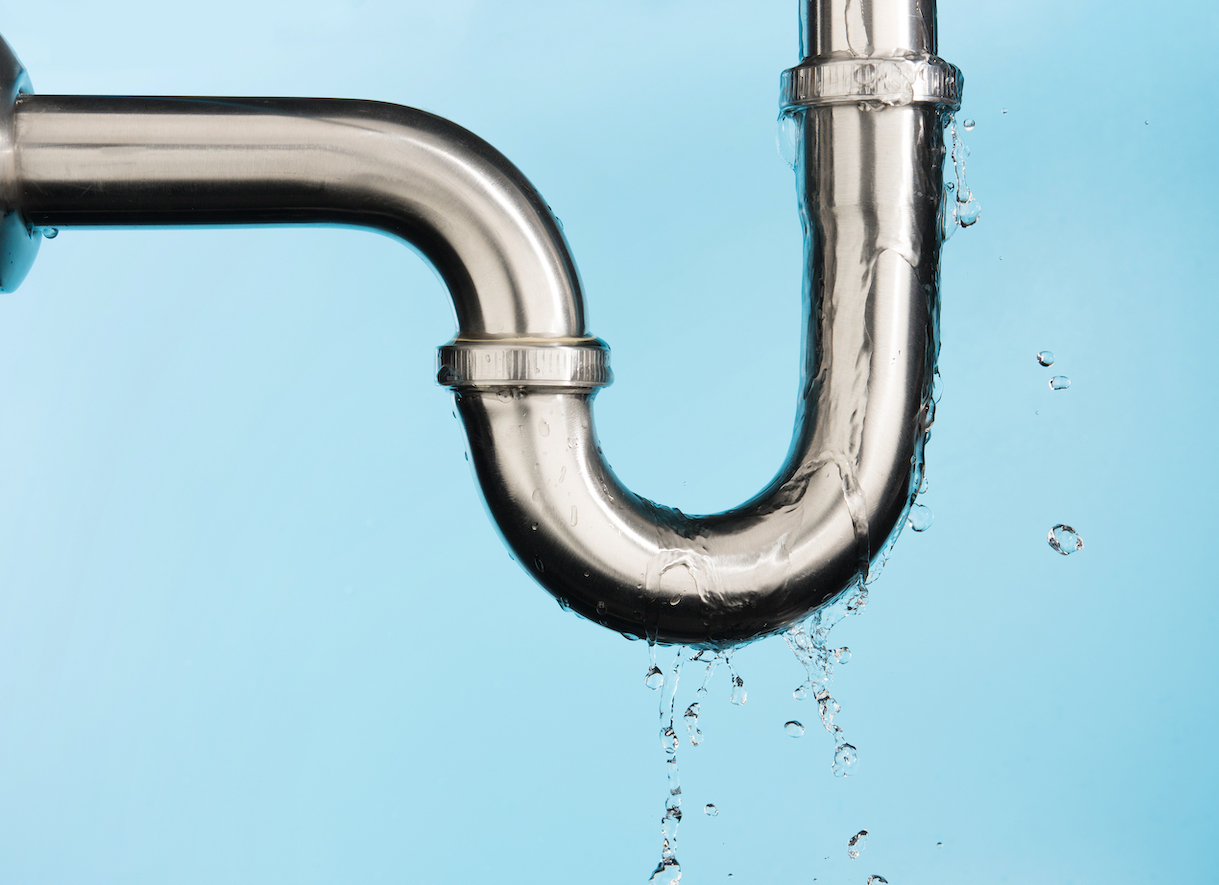
Like every other creature, mice need water to live. “So if there are any leaking pipes or standing water, that can draw them in too,” Carpenter explains. Just do a quick check under sink cabinets and near drains in basements to make sure there are no water issues you need to address — in addition to mice, these can also cause mold and mildew problems that may impact your health. (Click through to learn more about how to get rid of mold in your bathroom.)
3. Bar common entry points
Shelter is the other top reason mice enter homes — most people believe they only invade in winter while looking for warmth, but they will also seek the cool, dry comfort of your house to escape the summer heat and rain.
“Shoring up your house from shelter-seeking mice takes a bit of a sharp eye,” says Thomas. “Mice have collapsible rib cages, which means they can flatten their bodies to fit in a tiny gap between, say, the bottom of your garage door and the floor, or a hole as small as 2 cm. They are also adept climbers, so the entryways don’t need to be ground-level.”
Where to check for mice
When looking for mouse entryways, grab a flashlight and check these areas key inside your home:
- Around doors and windows
- Inside cabinets, particularly the kitchen and bathrooms
- Along baseboards and near vent openings
- Behind appliances
- Around pipes and floor drains
- Along basement walls and crawl spaces
Then head outside and inspect these spots:
- The foundation
- Around pipes, gas lines or electrical wiring
- The garage door and walls
- Around any weather stripping
- Any outdoor vents and airways
- Attic windows
See holes and gaps? A home remedy that works: Use copper or steel wool to fill in holes, as mice typically won’t put in the effort to chew through it.
Or, you can fill them in using expandable mouse-proof foam insultation, such as DAP Mouse Foam Sealant, (Buy from Amazon, $18.62) or Smart Dispenser 12 oz. Pestblock Insulating Spray Foam Sealant, (Buy from Home Depot, $9.97)
For more inexpensive pest control tips:
Bugs In Your Home? Exterminators Say These 5 Pantry Staples Will Pest-Proof Any Space
5 Easy Ways to Pest-Proof Your Back Yard!
8 Non-Toxic Tricks To Eradicate Earwigs From Your House — and Keep Them Gone!


